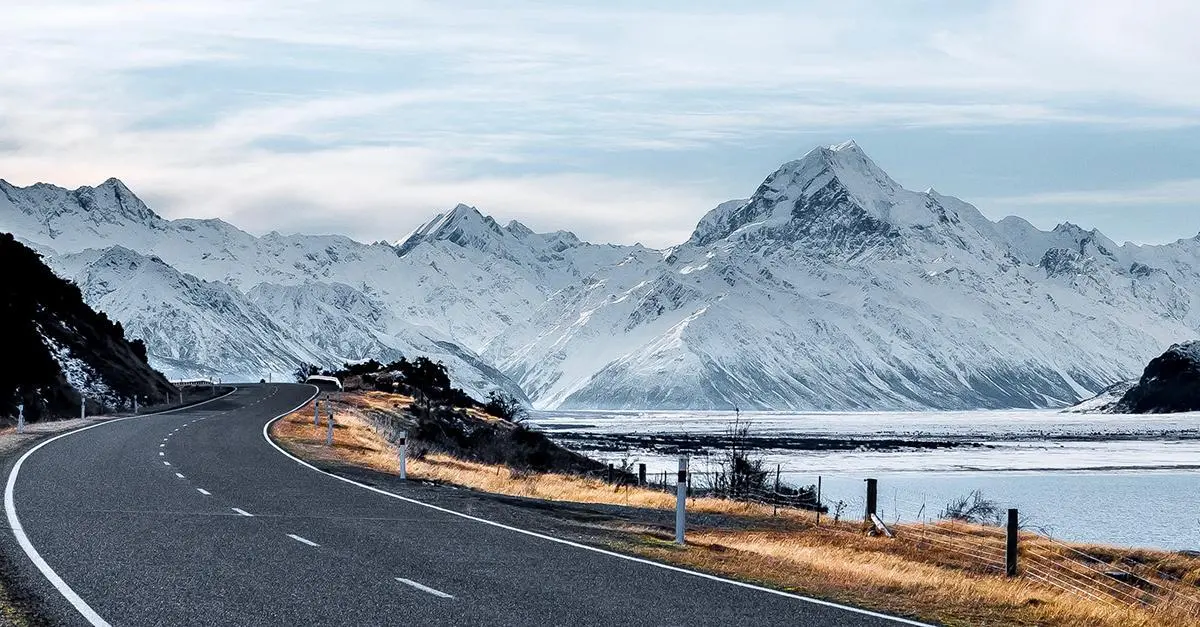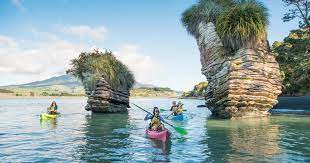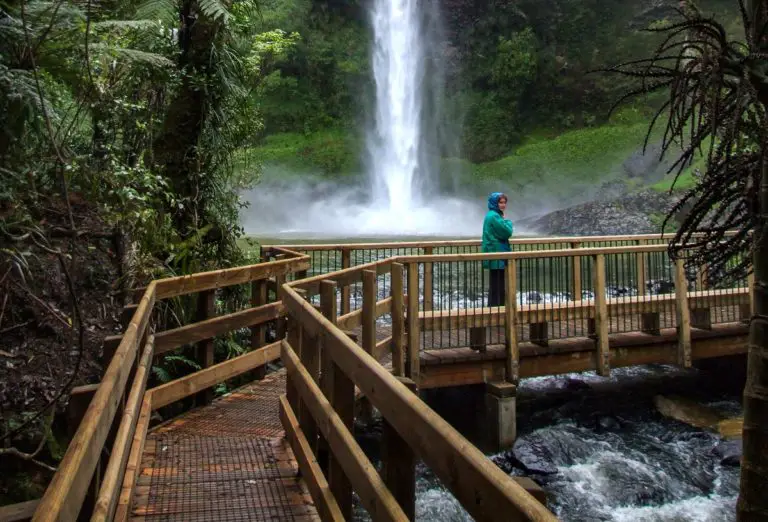It’s an age-old question: Does it really snow in this part of the world? If you’re asking about New Zealand, the answer is a resounding yes! Though temperatures may not be as cold as more northern countries, New Zealand has a unique geography that makes snowfall possible. In this blog post, we’ll explore the science behind snowfall in New Zealand and explain why the winter season can be so beautiful in this part of the world.
New Zealand’s climate
New Zealand’s climate is known for its diversity and variability. The country experiences a range of climates due to its unique geography and location in the Southern Hemisphere. The North Island generally has a milder climate compared to the South Island, which is influenced by the Southern Alps and experiences colder temperatures.
In the North Island, you can expect mild winters with average temperatures ranging from 8 to 15 degrees Celsius (46 to 59 degrees Fahrenheit). The weather can be changeable, with rain and occasional frost in some areas. Snowfall is less common, except in higher elevations or mountainous regions.
On the other hand, the South Island offers a more pronounced winter experience. It is characterized by cooler temperatures and the potential for significant snowfall. The Southern Alps act as a barrier, creating a drier and colder climate in the interior regions, while the coastal areas tend to be wetter.
Regardless of the region, New Zealand’s climate is influenced by the westerly winds, which can bring in weather systems from the Tasman Sea. This can result in rapid changes in weather patterns, including sudden drops in temperature and periods of heavy rain or snowfall.
When is winter in New Zealand?
New Zealand’s winter season varies depending on the region and can be a little different from what you might expect in the Northern Hemisphere. Winter in New Zealand officially begins on June 1st and ends on August 31st, which aligns with the meteorological definition of winter. However, the weather patterns and temperatures can differ significantly throughout the country.
In the North Island, winter is generally milder compared to the South Island. It’s a time when you can expect cooler temperatures, occasional frost, and the possibility of rain. While snowfall is less common in most areas, you may still encounter it in higher elevations or mountainous regions. If you’re looking for a more mild and comfortable winter experience, the North Island is a great choice.
On the other hand, the South Island is known for its stunning winter landscapes. This is where you’ll find the Southern Alps, which are home to some of the best skiing and snowboarding in New Zealand. The South Island experiences colder temperatures and a higher chance of snowfall. The mountains and ski resorts are typically covered in a beautiful blanket of snow, creating a winter wonderland that attracts visitors from all over the world.
The North Island vs. the South Island in winter
When it comes to winter in New Zealand, the North Island and the South Island offer distinct experiences. While both islands have their own unique beauty, there are a few key differences that make each region special during the winter season.
In the North Island, winter is generally milder compared to the South Island. The temperatures are cooler, but they rarely drop below freezing. This makes it a great choice for those who prefer a more moderate winter climate. The landscapes are still beautiful, with lush green hillsides and sparkling lakes. In some areas, you may even encounter occasional frost, creating a magical winter wonderland.
While snowfall is less common, you can still find it in the higher elevations and mountainous regions. The North Island is perfect for those looking to explore the cities, relax on beautiful beaches, or immerse themselves in Maori culture.
On the other hand, the South Island is where you’ll find the true winter wonderland. With the stunning Southern Alps and their snow-covered peaks, this is the place to be for snow enthusiasts. Skiing and snowboarding are popular activities, with world-class resorts and slopes to suit all levels of expertise.
The landscapes are breathtaking, with mountains, fjords, and glaciers covered in a pristine layer of white. The South Island offers the ultimate winter adventure, whether you’re looking to hit the slopes, go hiking in the snow, or simply enjoy the stunning scenery.
Whether you choose the North Island or the South Island, New Zealand offers a winter experience like no other. From mild and magical to extreme and exhilarating, you’ll find it all in this beautiful country. So, embrace the winter season and discover the unique wonders of New Zealand’s North and South Islands.
Skiing and snowboarding in New Zealand
New Zealand is a paradise for skiing and snowboarding enthusiasts. With its stunning alpine landscapes and world-class ski resorts, it’s no wonder that people flock to this country for their winter adventures.
The South Island, in particular, is a haven for snow sports. It boasts several ski fields, including the renowned Queenstown and Wanaka regions. These ski areas offer a range of slopes suitable for all skill levels, from beginners to advanced riders. Whether you’re looking to conquer steep runs, glide through powder, or perfect your freestyle tricks in terrain parks, there’s something for everyone.
One of the highlights of skiing and snowboarding in New Zealand is the stunning scenery. As you carve your way down the slopes, you’ll be surrounded by snow-capped mountains, pristine alpine lakes, and breathtaking vistas. It truly feels like a winter wonderland.
If you’re new to skiing or snowboarding, don’t worry! New Zealand ski resorts offer lessons and rentals, making it easy for beginners to get started. You can take lessons from experienced instructors who will guide you through the basics and help you build your confidence on the slopes.
For the more experienced skiers and snowboarders, New Zealand offers a variety of challenging terrain. From steep chutes and wide-open bowls to tree runs and off-piste adventures, there’s plenty to keep you entertained and pushing your limits.
Other winter activities in New Zealand
Winter in New Zealand isn’t just about skiing and snowboarding. There are plenty of other winter activities to keep you entertained and make the most of this beautiful season. One popular activity is snowshoeing, which allows you to explore the snow-covered landscapes at a slower pace. Strap on a pair of snowshoes and venture out into the winter wonderland, immersing yourself in the serenity of the snowy forests and mountains.
If you’re a fan of adrenaline-pumping adventures, why not try ice climbing? New Zealand has several ice climbing locations where you can test your skills and challenge yourself on frozen waterfalls and ice walls. It’s a thrilling experience that will push you to your limits and give you a whole new perspective on winter sports.
For those seeking a more relaxed winter activity, try ice skating. Many cities and towns in New Zealand set up temporary ice rinks during the winter season, providing the perfect opportunity to lace up your skates and glide across the ice. It’s a fun and family-friendly activity that will bring out the child in everyone.
If you’re a nature lover, consider taking a winter hike or nature walk. The landscapes transform into a winter wonderland, with snow-capped mountains, frozen lakes, and frost-covered trees. You can explore national parks and trails, breathing in the crisp winter air and admiring the beauty of nature in its frozen state.
Lastly, don’t forget about the cozy indoor activities. Winter in New Zealand is the perfect time to indulge in warm drinks, delicious food, and relaxing spa treatments. Visit a local cafe or restaurant to warm up with a hot chocolate or a hearty meal, and pamper yourself with a massage or a soak in a thermal hot pool.
What to pack for a New Zealand winter trip
When planning a winter trip to New Zealand, it’s essential to pack the right gear to ensure a comfortable and enjoyable experience. The weather can be changeable, so it’s important to be prepared for various conditions. Here’s a list of essential items to pack for a New Zealand winter trip:
1. Warm clothing: Layering is key in New Zealand’s winter. Pack thermal base layers, fleece jackets, and waterproof outerwear. Don’t forget hats, gloves, and scarves to protect against the cold.
2. Footwear: Bring sturdy waterproof boots or shoes for outdoor activities. You’ll want footwear that can handle snowy or wet conditions, as well as provide good traction.
3. Accessories: Sunglasses and sunscreen are a must, even in winter. The sun can be intense, especially when reflecting off the snow. Don’t forget a good quality backpack to carry your essentials while exploring.
4. Swimwear: While it may sound strange to pack swimwear for winter, New Zealand has hot springs and thermal pools that are perfect for a relaxing soak. Pack your swimsuit to take advantage of these unique experiences.
5. Medications and first aid: Pack any necessary medications, as well as a basic first aid kit. Be prepared for minor injuries or illnesses that may occur during your trip.
6. Camera and chargers: New Zealand’s winter landscapes are incredibly picturesque, so don’t forget your camera to capture those stunning moments. Also, bring chargers and adapters to ensure you can keep your devices powered up.
7. Travel insurance: It’s always a good idea to have travel insurance to protect against unexpected events or emergencies. Make sure you have appropriate coverage for outdoor activities and winter sports.
Tips for driving in snowy conditions in New Zealand
Winter in New Zealand brings stunning snow-covered landscapes, but it also presents unique challenges for drivers. If you’re planning to drive during the winter season, here are some essential tips to ensure your safety and enjoyment on the road.
1. Check the weather and road conditions: Before heading out, always check the weather forecast and road conditions. New Zealand’s weather can change quickly, and roads can become hazardous. Use reliable sources like the New Zealand Transport Agency (NZTA) website to stay updated on any road closures or warnings.
2. Prepare your vehicle: Make sure your vehicle is equipped for winter driving. Check your tires for proper tread depth and consider using chains or snow socks for added traction. Ensure your windshield wipers are in good condition, and fill up your washer fluid with an anti-freeze solution. Don’t forget to top up your fuel tank, as you may encounter long stretches between petrol stations in some areas.
3. Drive slowly and maintain distance: Snow and ice can make roads slippery, so reduce your speed and drive at a safe and comfortable pace. Leave extra space between you and the vehicle in front of you to allow for longer stopping distances. Avoid sudden braking or acceleration, as it can cause your vehicle to skid.
4. Use your headlights and fog lights: Visibility can be reduced in snowy conditions, so always use your headlights, even during daylight hours. If you encounter fog, switch on your fog lights to increase your visibility to other drivers.
5. Stay calm and focused: Driving in snowy conditions can be stressful, but it’s essential to remain calm and focused. Avoid distractions like using your mobile phone or eating while driving. Keep both hands on the steering wheel and concentrate on the road ahead.
6. Know how to handle skids: If your vehicle starts to skid, remain calm and avoid overreacting. Steer gently in the direction you want to go and avoid braking harshly. If you have anti-lock brakes (ABS), apply steady pressure to the brake pedal. If you don’t have ABS, use threshold braking by pumping the brakes gently.
7. Be prepared for emergencies: Always carry an emergency kit in your vehicle, including blankets, a first aid kit, a flashlight, extra warm clothing, and non-perishable snacks. It’s also a good idea to have a fully charged mobile phone and a portable charger with you.




